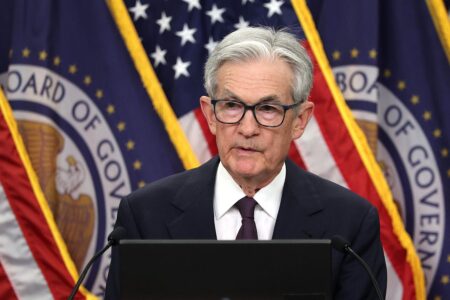Because of increased layoffs, and a tricky job market outlook, employee confidence reached a new record low in May. A recent survey from Glassdoor says the share of employees reporting a positive six-month outlook fell to 44.1% in May, down from 45.8% in April and shattering the previous low (which was set in February of this year). Layoff announcements from companies like Procter & Gamble, part of a recent slowdown in consumer spending, are impacting the future outlook for employees. P&G joins Microsoft, IBM, the Walt Disney Company, Walmart and others who have announced recent layoffs. For these organizations, and others, restructurings were influenced or driven by investment in AI, shifting market conditions or other adjustments in the pursuit of profitability. Are these layoffs a trend that will continue? Is this low confidence rating a prediction for the future – or a reaction to the layoffs of the recent past?
Economic Research Shows Layoffs and Job Prospects Dent Confidence
Based on economic research by Glassdoor, layoffs are a key factor in the confidence slump. In May, mentions of layoffs in Glassdoor reviews surged nearly 10% and remain up 18% over last year’s figures, due to rising layoff fears. Layoffs, driven by AI and other factors, are creating a crisis of confidence, especially for Gen Z in the workforce. In a recent Forbes article, it was shown that managers would rather hire artificial intelligence (AI) than offer jobs to Gen Z workers nearly 40% of the time. While everyone knows that working with AI is the collaboration of the future, is AI the competitive threat of the present?
According to Glassdoor data, employee confidence in government and public administration continues to sink as well, with over 65% of employees reporting a negative outlook in May. Since January, employee confidence in the public service sector has dropped nearly 15%. According to Challenger, Gray & Christmas, a global outplacement service, there have been 284,044 planned governmental layoffs as a result of the Department of Government Efficiency (DOGE) cuts.
More Than Just Layoffs: Factors Impacting Confidence
BioSpace’s May 2025 report, which, citing Gallup’s “State of the Global Workplace” report, notes a global dip in employee engagement in 2024, with economic uncertainty and prevalent layoffs creating a climate of anxiety. In the first quarter of 2025, for example, the normally robust biopharma market showed a 20% drop in job postings year-over-year – contrasted by a 91% surge in job applications.
Recent data provided in the LISEP index, a non-governmental measurement of unemployment in the USA, over 24% of the workforce is “functionally unemployed”. Government data counts a person as employed if they’ve worked as little as one hour over the past two weeks. LISEP does not. The index counts workers with wages below the poverty line as functionally unemployed. If you are part-time and can’t get a full-time job, or your gig doesn’t pay a living wage, you’re counted in the LISEP index. “We are facing a job market where nearly one-in-four workers are functionally unemployed, and current trends show little sign of improvement,” said LISEP Chair Gene Ludwig. “The harsh reality is that far too many Americans are still struggling to make ends meet, and absent an influx of dependable, good-paying jobs, the economic opportunity gap will widen.”
In an ominous article with the subheading The Worst Job Market for Grads in Years, CNN reports that unemployment for recent college grads has grown at triple the national increase. The Bureau of Labor and Statistics says that the unemployment rate for those aged 20-24 is almost twice the national average, at 8.2%. AI’s impact on entry-level jobs, such as customer service, has already been felt. Now, white-collar sectors like math and computer science, highly susceptible to AI disruption, have already seen an 8% drop in employment for recent graduates since 2022, according to Revelio Labs.
Volatility, Uncertainty and Economic Changes
A pervasive sense of economic uncertainty is being felt at every level in the workforce, as leaders look for the thing that markets always crave (stability) in the midst of rapid change. Those changes, in artificial intelligence as well as in the way the U.S. economy functions on the world stage, are the backdrop for increasing concerns and employee job confidence. And that lack of employee confidence might be well-justified for white-collar workers, where Revelio reports that white collar job postings have dropped by nearly 36% in the last two years. Dario Amodei, CEO of Anthropic, warned analysts that AI could eliminate half of all entry-level white collar jobs and potentially spike unemployment by 10-20% in the next five years.
Economic uncertainty is leading companies to rethink hiring decisions, and artificial intelligence is becoming more of a factor in every employment decision. For workers looking for clarity inside the chaos, understanding how to work with AI is crucial. It’s no wonder that employee confidence has taken a hit. A recent report from Infinitive states that the overall impact of AI on the U.S. employment market is the “calm before the storm” of more layoffs.
Read the full article here











